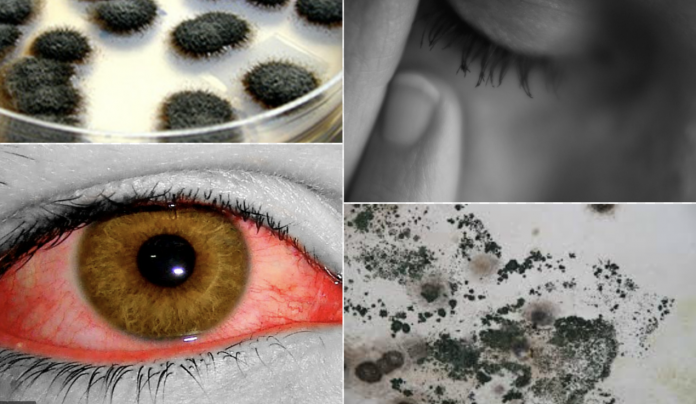Sometimes we find ourselves right in the middle of the breeding space of toxic mold without us knowing, or sometimes because we don’t know or we disregard obvious warning signs. Signs like dampness, leaking roof and musty odors should not be ignored because they are signs of mol breeding space. Toxic mold should not be taken lightly because it can affect your health, it can cause allergies, vertigo, fatigue, and rashes.
Sometimes, people don’t realize that they are exposed to toxic mold and when they get sick because of that exposure, they think that it’s just the flu or common cold. Indoor pollutants like mycotoxins and mold can be the primary cause of sickness (rates can get to or surpass 50%). As they say, knowledge is power, that is why you should know the places where and how mold forms, mold exposure symptoms, and of course, how to protect yourself.
First, you should know where mold forms.
Where mold forms
Mold grows anywhere, on sheetrock, wood, fabric, leather, and many other places as well like insulation, etc. The two ingredients that cause mold growth are oxygen and moisture, that is why it can be found in damp and wet areas like bathrooms, under the sinks, kitchen, around dishwashers, fridges, washing machines., basements, roof leaks, and around the windows where condensation collects.
If you smell musty odors, then it is the first sign of mold. If you have black or white specks, discolored carpet, buckled floorboards, or new water stains on your wall, then the mold is being developed in your house.
Types of mold
Moist areas are the common ground of mold, but an area exposed to water damage can also be a mold formation ground. However, you should know that there is not a single type of mold, but there are 5 mold types.
Alternaria
This type is usually found in the upper respiratory tract, mouth, and nose. This type of mold can trigger responses similar to allergic responses.
Aspergillus
This type of mold produces mycotoxins and can potentially lead to lung infections. It is usually found in a damp and warm climate. This type of mold looks like house dust.
Cladosporium
This type of mold can trigger asthma and allergic rhinitis symptoms. Despite the fact that Cladosporium is an outdoor fungus, it can easily infiltrate your house and grow on porous materials, textiles, damp materials, and wood.
Penicillium
Penicillium can cause asthma and allergies and produce mycotoxins. This mold can be found on carpets, wallpaper, fiberglass duct insulation, and carpets.
Stachybotrys
This is by far the most toxic mold type because it produces mycotoxins that can cause lung bleeding, dangerous breathing difficulties, and much other serious health problems. Stachybotrys (also known as black mold) is not usually found in households (especially if your house has concrete tile or linoleum) but can be found on paper or wood.
Symptoms
There is a handful of symptoms indicating that you’re exposed to toxic mold in your own house. The symptoms are the following
- Headache
- Light sensitivity
- Joint pain
- Appetite swings
- Shortness of breath
- Morning stiffness
- Tearing, disorientation, metallic taste in the mouth
- Diarrhea
- Vertigo
- Chronic cough
- Concentration difficulties
- Poor memory
- Difficulties in word-finding
- Fatigue and weakness
- Static shocks
- Being lightheaded
- Bloating
- Body temperature regulation
- sinus congestion
- Unusual skin sensations, tingling, and numbness
- Abdominal pain
- Increased thirst
- Red eyes
- Mood swings
- Increased urinary frequency
- Sweats
- Sharp pains
- Blurred vision
If you are still unsure whether or not you are exposed to toxic mold, here are 12 questions that can help you find out whether or not you’re exposed.
- Has your home been flooded?
- Do you have frequent headaches?
- Have you noticed water damage or discoloration elsewhere?
- Do you experience recurring sinus infections?
- Are you fatigued and have a skin rashes?
- Do you experience recurring respiratory infections and coughing?
- Have you worked or lived in a building where the air vents or ceiling tiles were discolored?
- Do your symptoms worsen on rainy days?
- Have you had leaks in the roof?
- Do musty odors bother you?
- Do you have frequent flu-like symptoms?
- Do you experience unusual shortness of breath?
If you think that you were exposed or still under exposure to toxic mold, then you should seek medical examination as soon as possible.
Treatment
The first and essential step to treat mold infections is to get out of the area that contains mold because if you stay there, you will make things worse for yourself. You can also do these following things:
Get a high-quality air purifier to control mold toxins.
This method will help you absorb all of the moisture and moly toxins in the area.
Clean up the surface mold if it is manageable.
You should not do this method if you have severe symptoms. Clean the surfaces where mold is not too large to get rid of it.
Get professionals to clean up the mold.
If your mold problem is not manageable and you can clear it all by yourself, or if you have black mold (Stachybotrys), then you should call for professional help, because, at this point, the mold is extremely toxic and you can’t handle it alone. Although this is not a cheap way to solve the problem, it is necessary because your symptoms will worsen over time.










